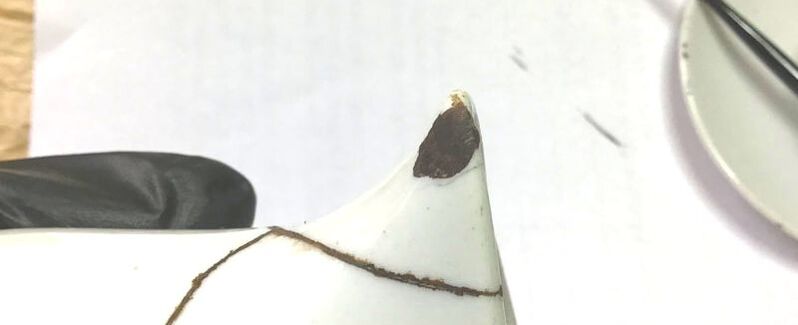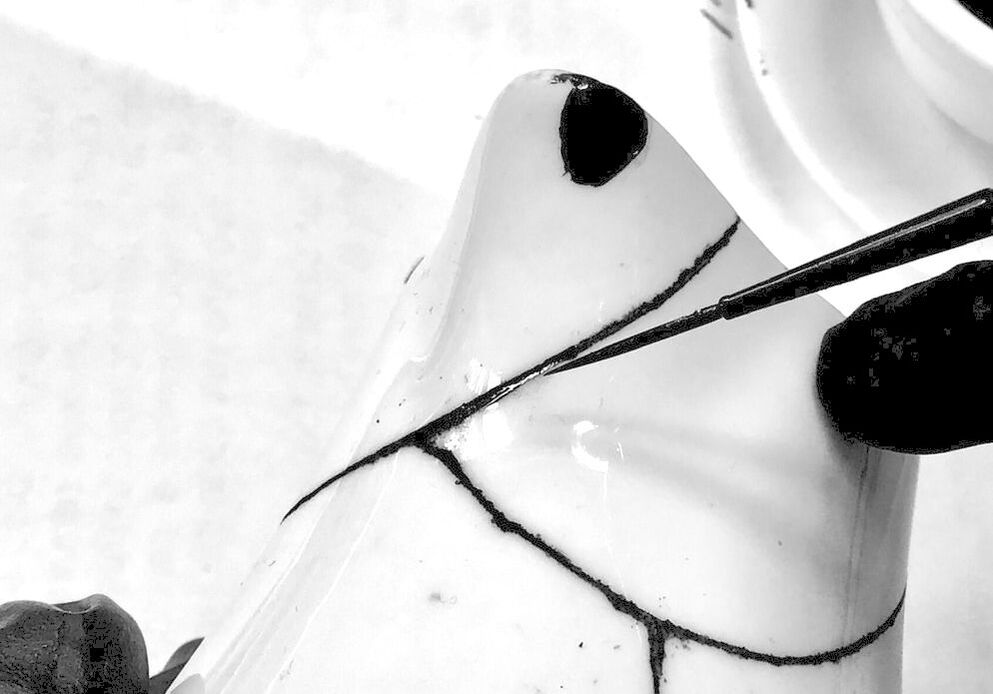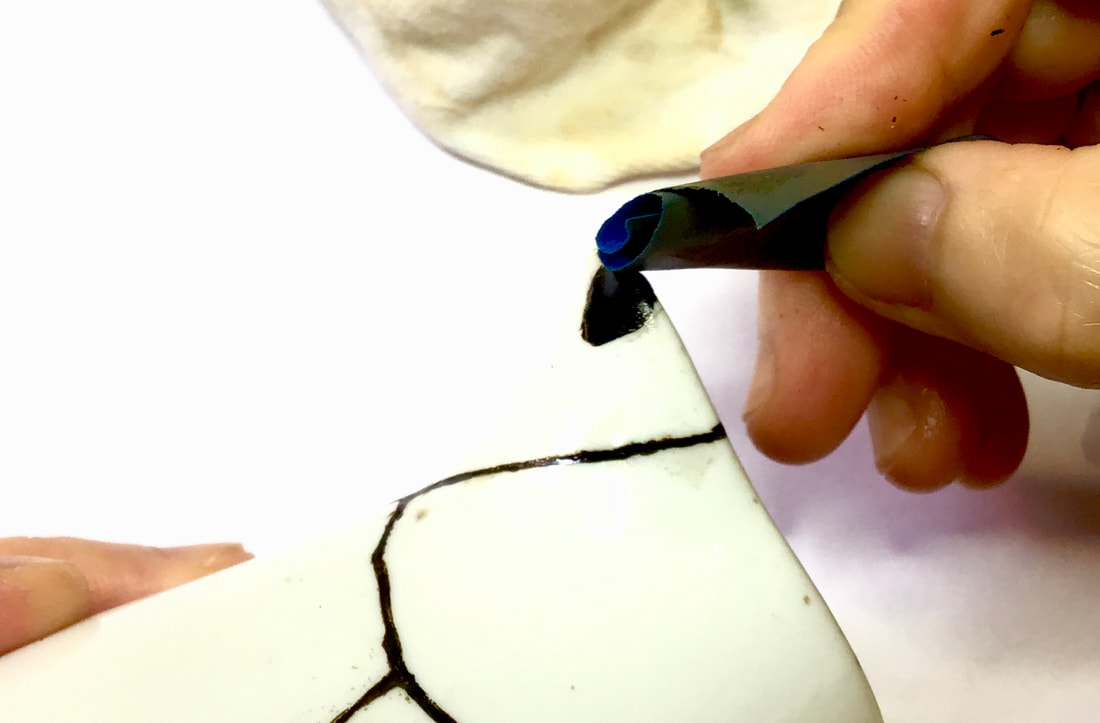After you have completed the repair on your ceramic by applying epoxy putty, sabi and kokuso, or what ever you used, a couple of base coats are needed to obtain a smoother surface and sealed before final urushi and metallic powder application. These base works are called Shita-nuri (undercoat), Naka-nuri (middle coat.)
YouTube link:
Kintsugi base urushi
You need:
Black urushi, or Red urushi
Ki-urushi
Turpentine
Isopropanol (or acetone)
Tool:
Brush
Spatula
Humid box
#3000 wet and dry sanding paper or Suruga Charcoal
Water
YouTube link:
Kintsugi base urushi
You need:
Black urushi, or Red urushi
Ki-urushi
Turpentine
Isopropanol (or acetone)
Tool:
Brush
Spatula
Humid box
#3000 wet and dry sanding paper or Suruga Charcoal
Water
Preparation:
Apply Ki-urushi using cotton swab or a brush on repaired area, then place in humid Box. (leave it for a day in the box.) You can dilute the Ki-urushi with Turpentine to reduce the time it takes to dry.
Clean excess Ki-urushi with isopropanol.
Apply Ki-urushi using cotton swab or a brush on repaired area, then place in humid Box. (leave it for a day in the box.) You can dilute the Ki-urushi with Turpentine to reduce the time it takes to dry.
Clean excess Ki-urushi with isopropanol.
Undercoat / Shita-nuri:
Dilute black /red urushi with turpentine, apply onto the area of repair. Place the ceramic in humid box for at least a couple of days till the urushi sets.
Dilute black /red urushi with turpentine, apply onto the area of repair. Place the ceramic in humid box for at least a couple of days till the urushi sets.
After it sets, using water, gently sand with#3000 sand paper, or Suruga charcoal. You might realise that excess urushi which has spilled out onto the glaze comes off by sanding.
The surface of black/red urushi will become matt. If there are pin holes, you need to fill it with sabi and wait till the sabi sets before applying the middle coat.
Middle coat / Naka-Nuri
Repeat the application and sanding over undercoat to create a second layer.
If you still find shiny spot, it is recommended to repeat the process once more if you want to achieve a smooth surface. The shiny spot means that the surface is not flat.
If you are happy or not a fussy person, move on to “Applying urushi and Metallic powder”.
The surface of black/red urushi will become matt. If there are pin holes, you need to fill it with sabi and wait till the sabi sets before applying the middle coat.
Middle coat / Naka-Nuri
Repeat the application and sanding over undercoat to create a second layer.
If you still find shiny spot, it is recommended to repeat the process once more if you want to achieve a smooth surface. The shiny spot means that the surface is not flat.
If you are happy or not a fussy person, move on to “Applying urushi and Metallic powder”.


